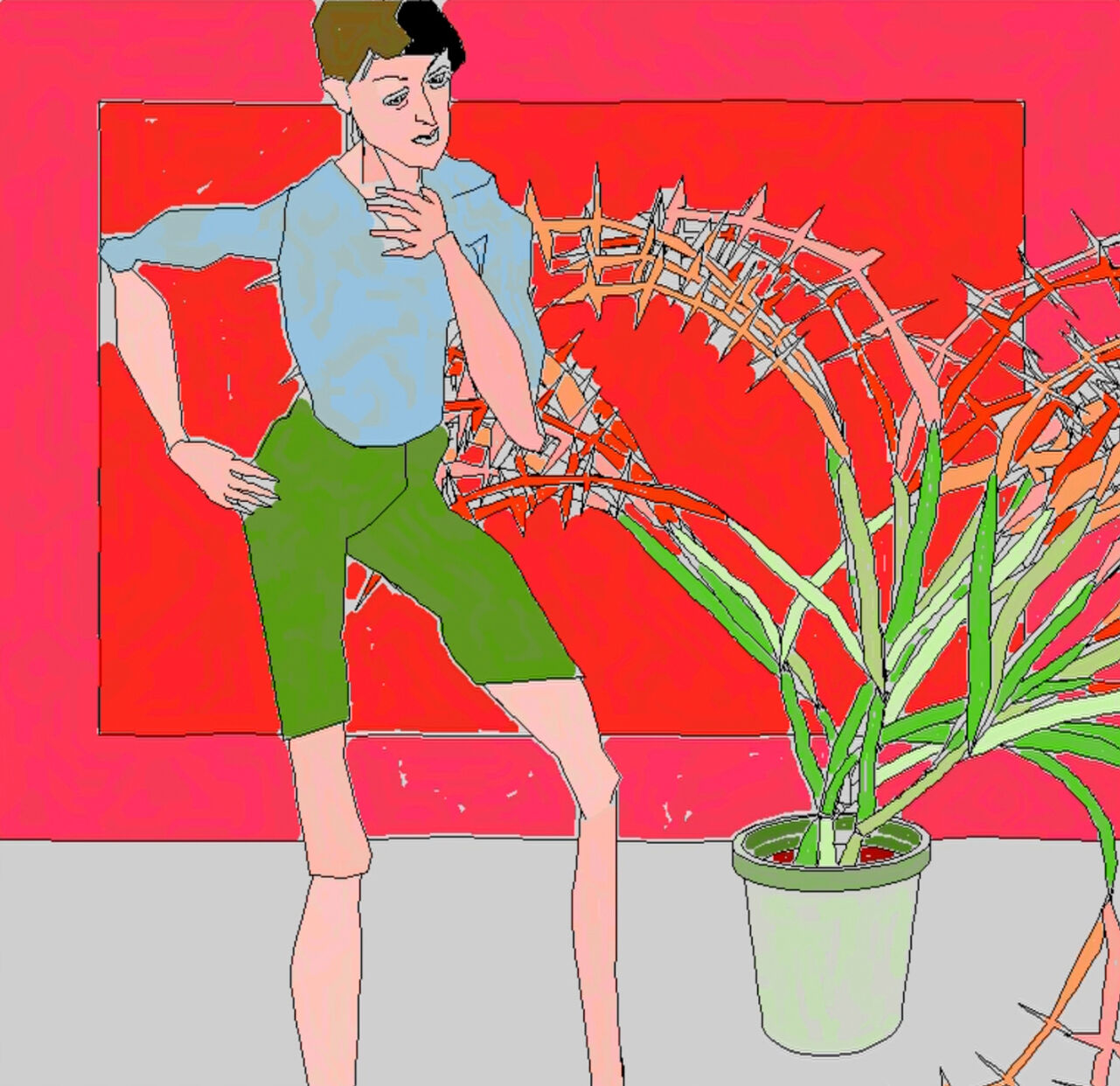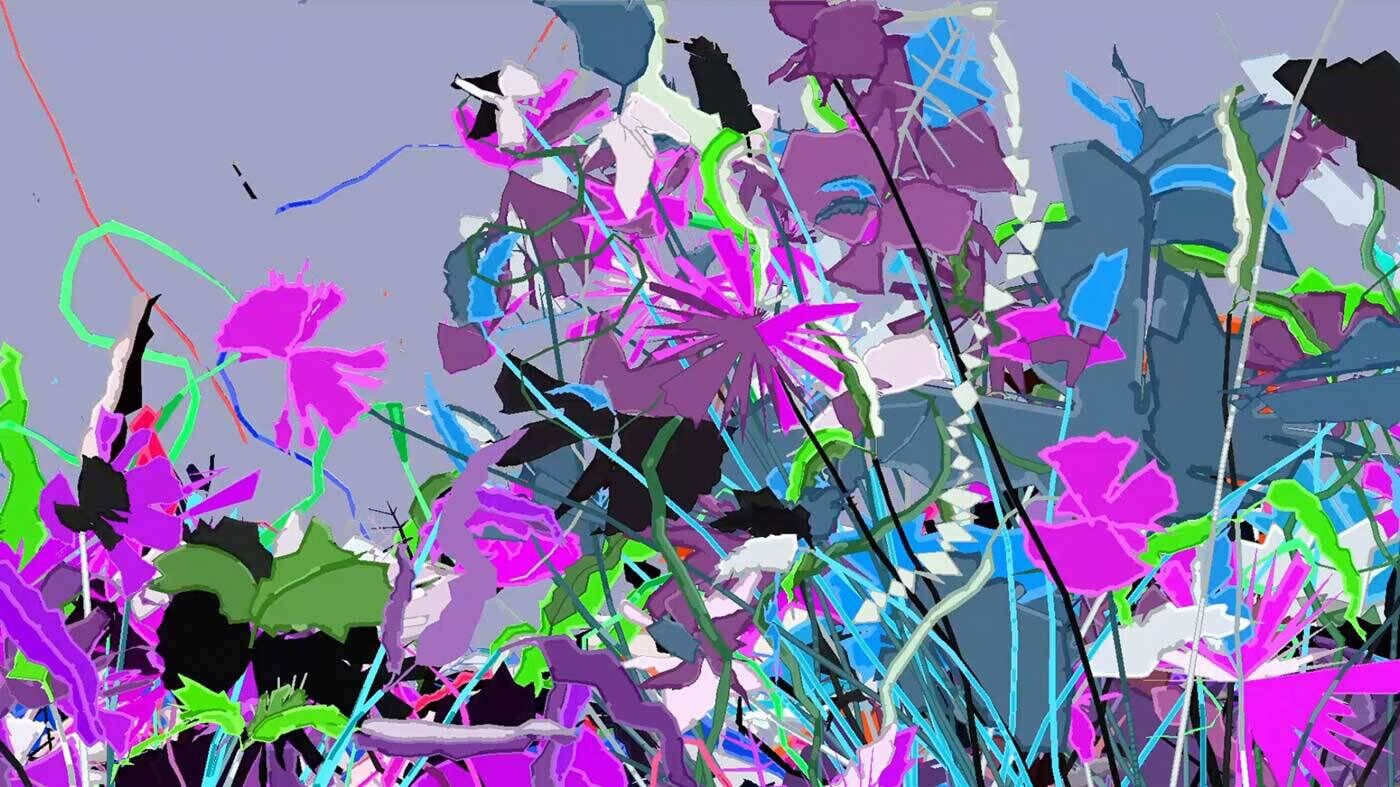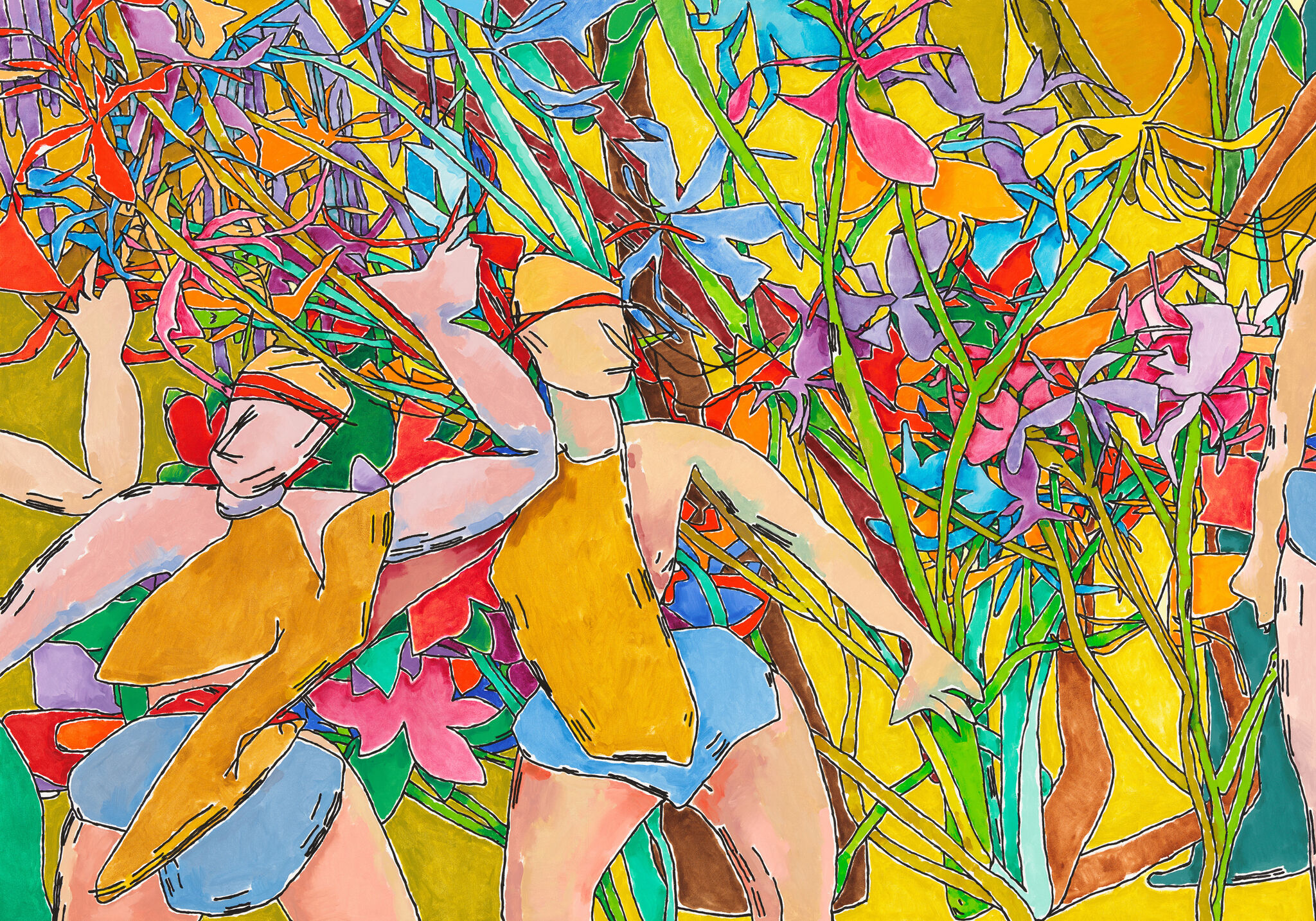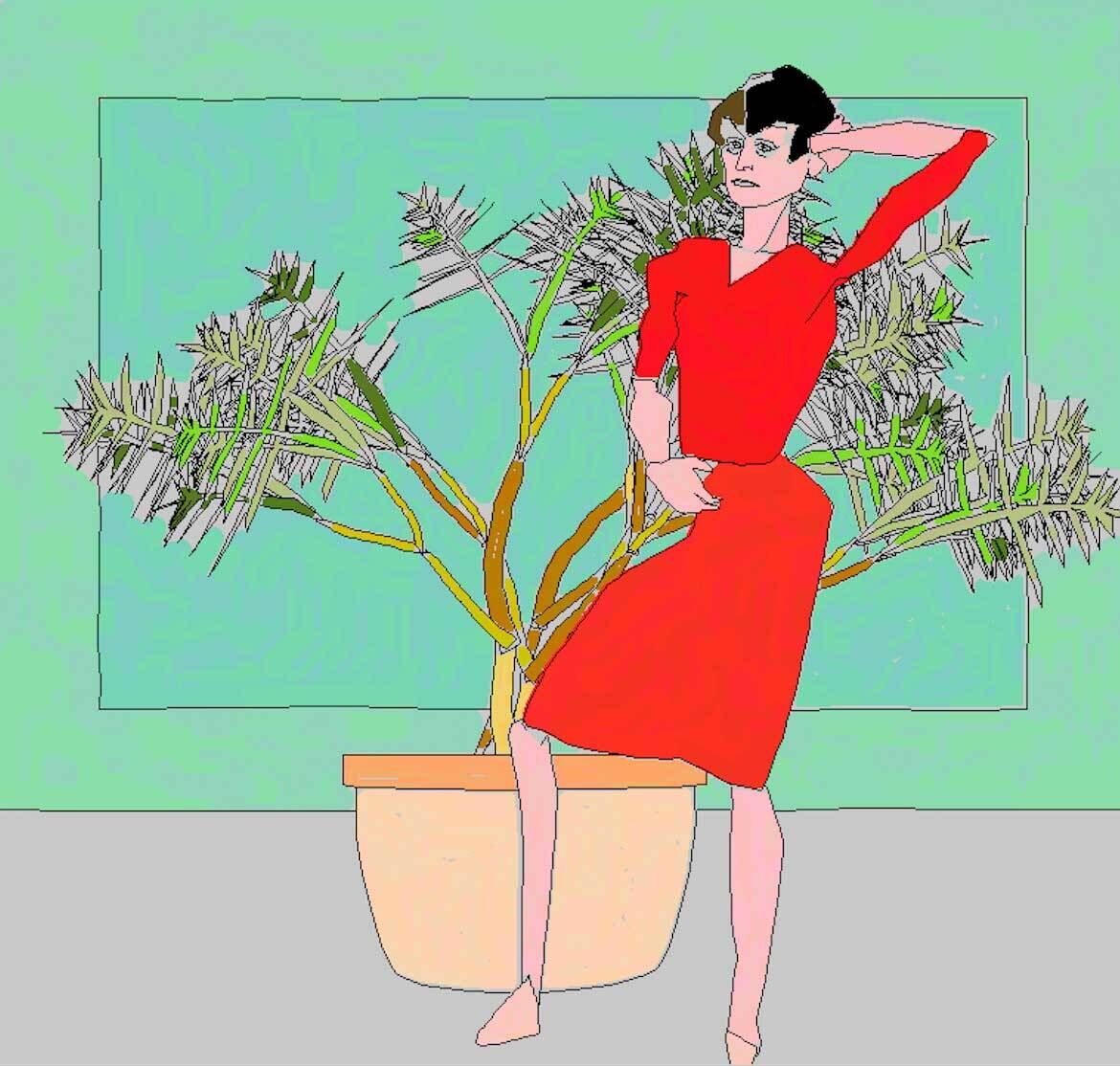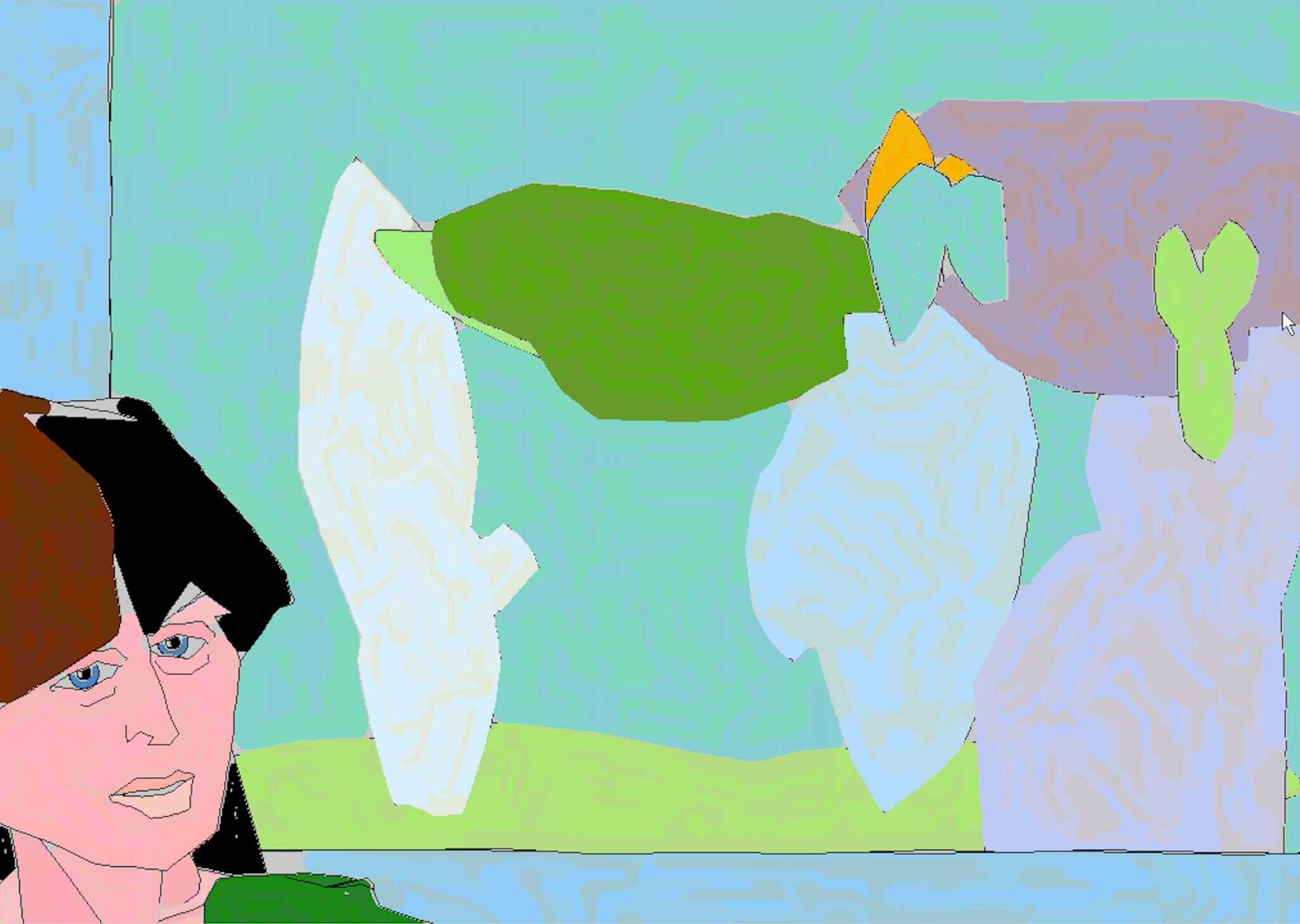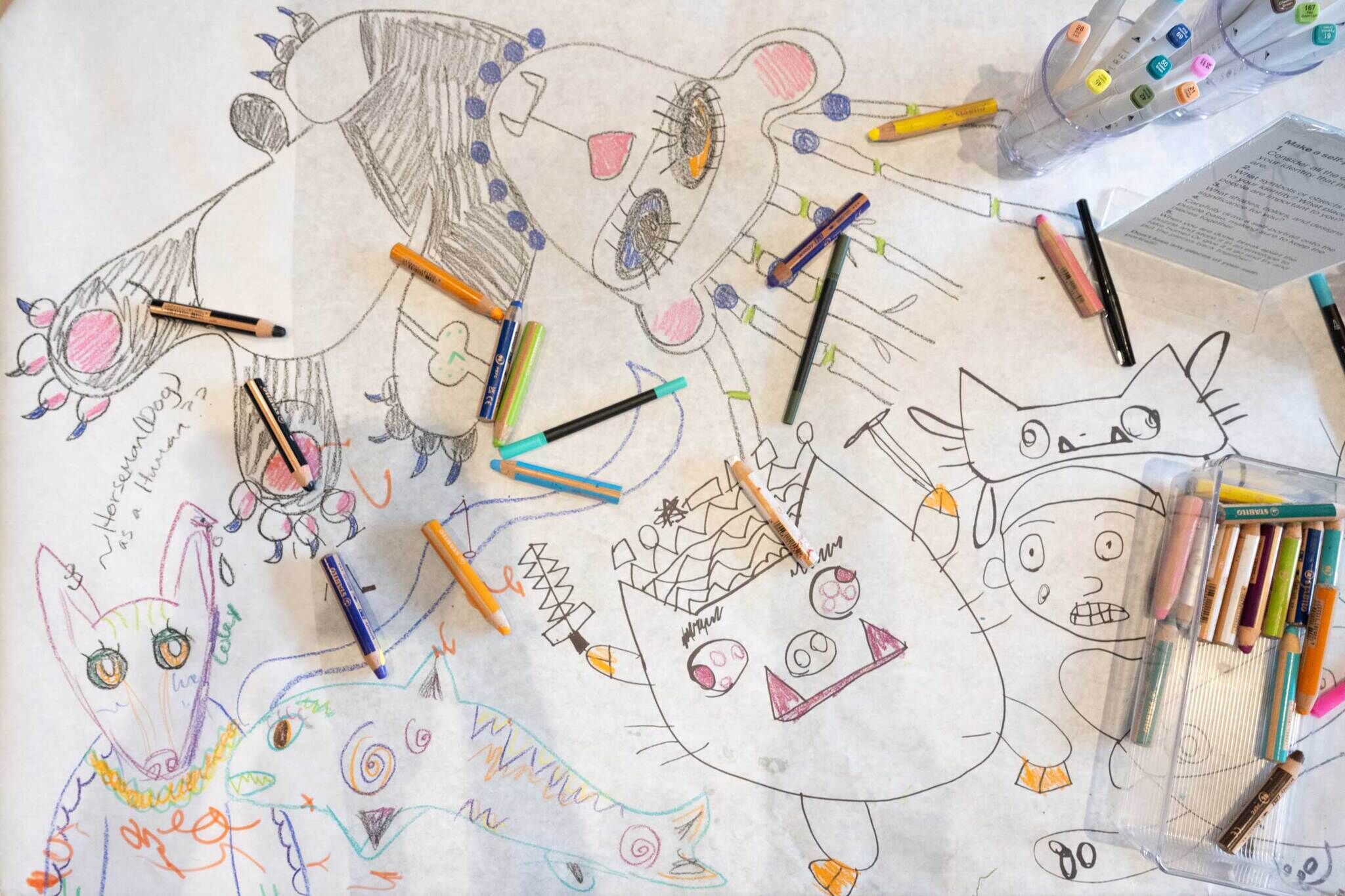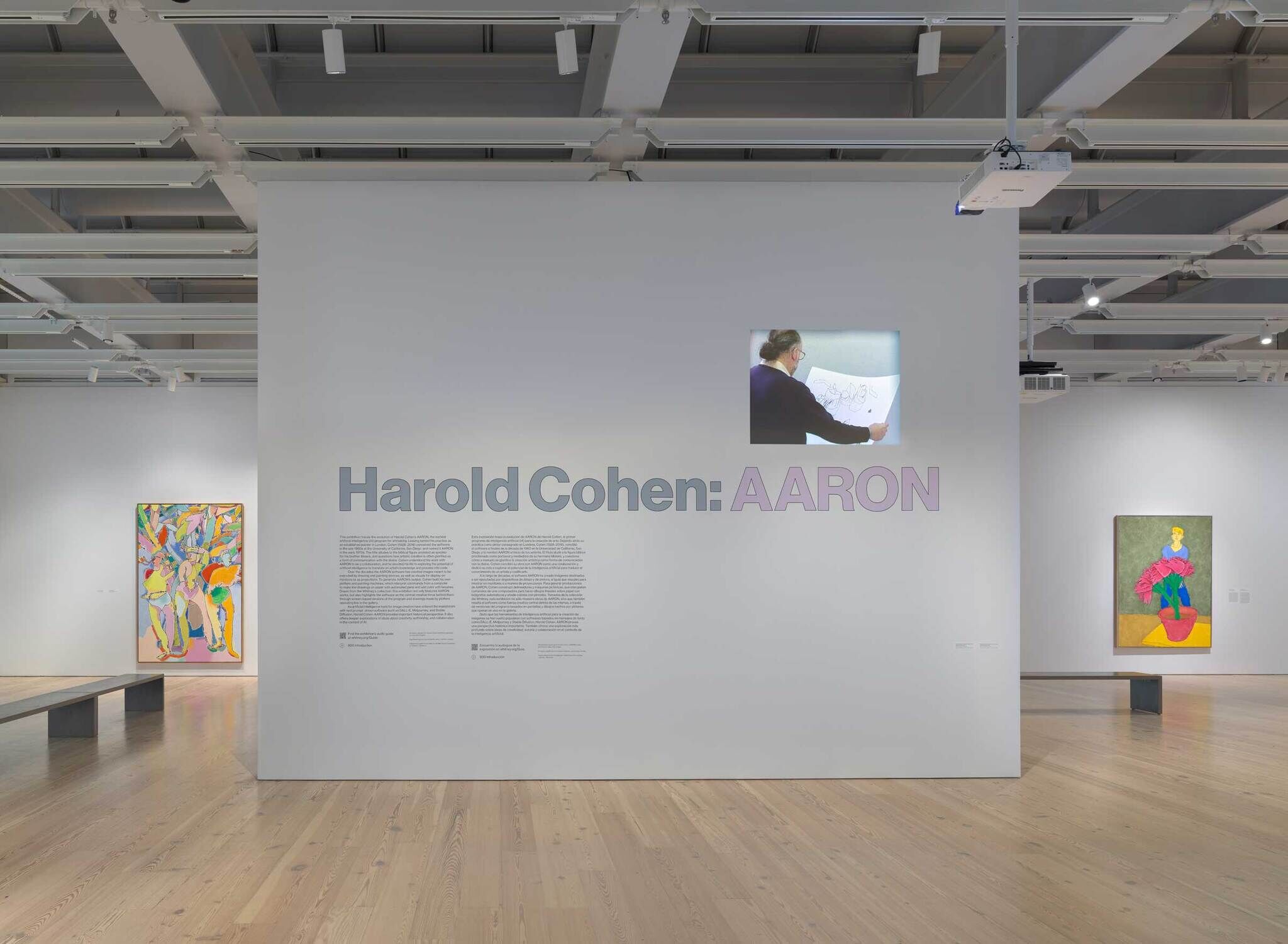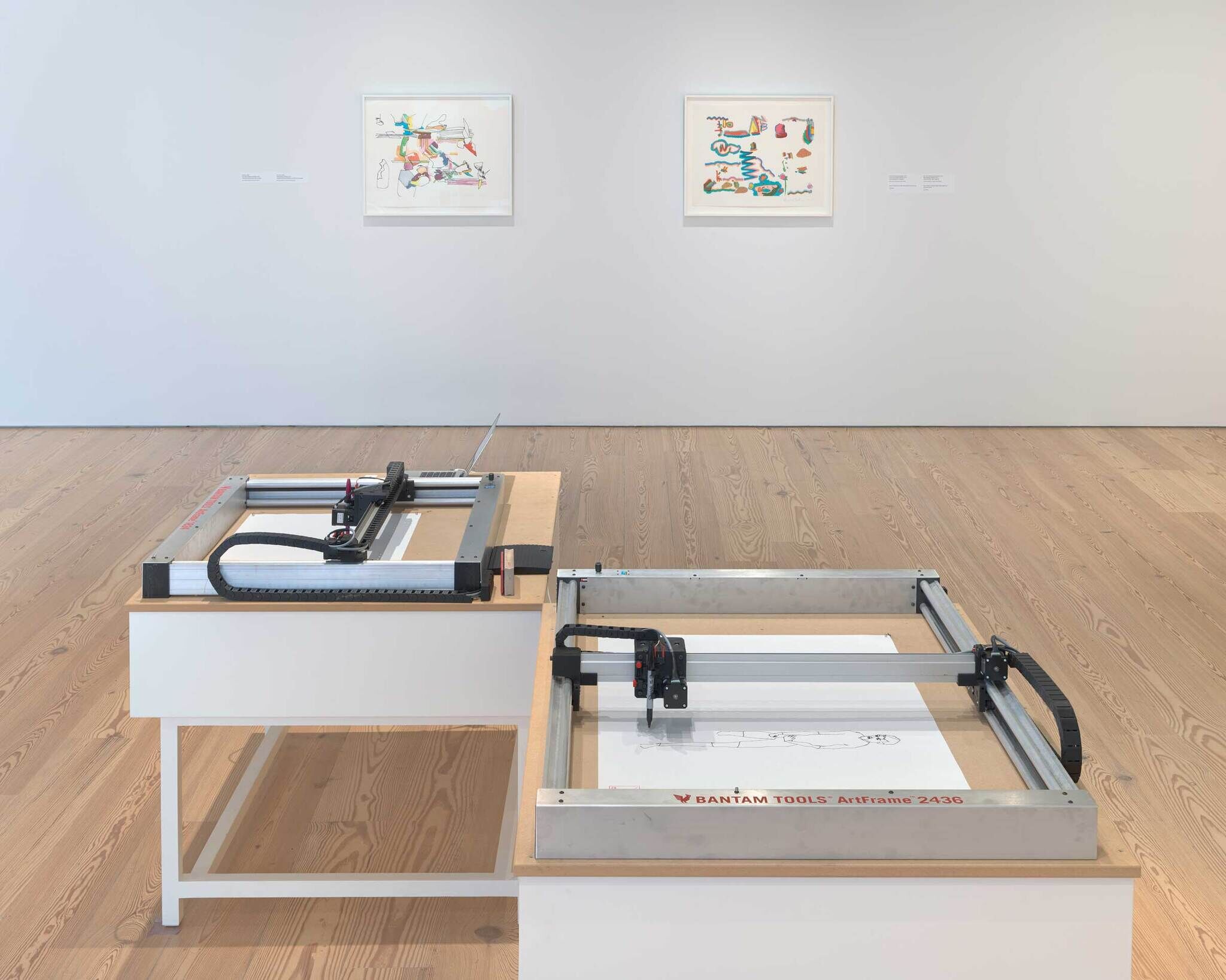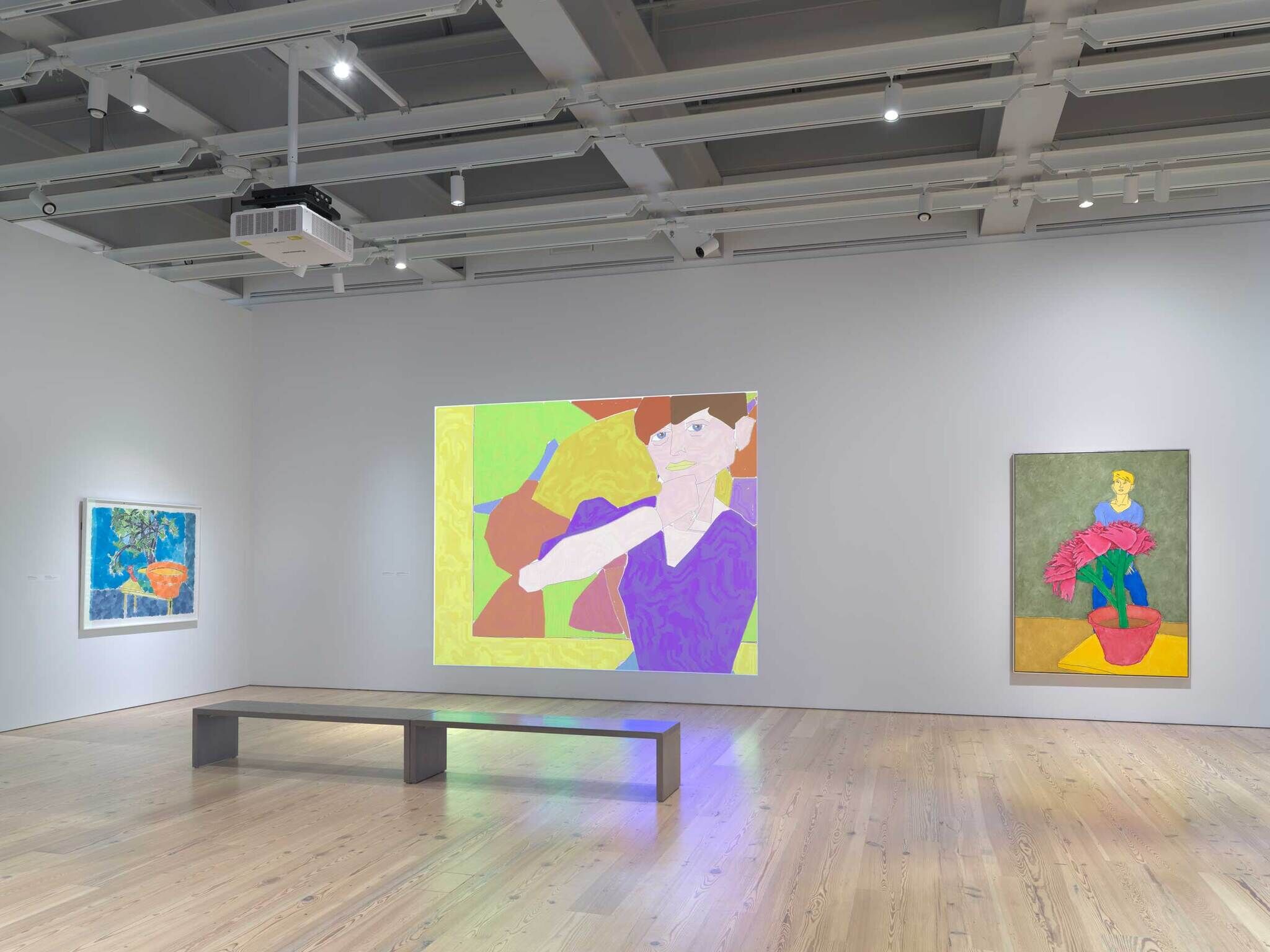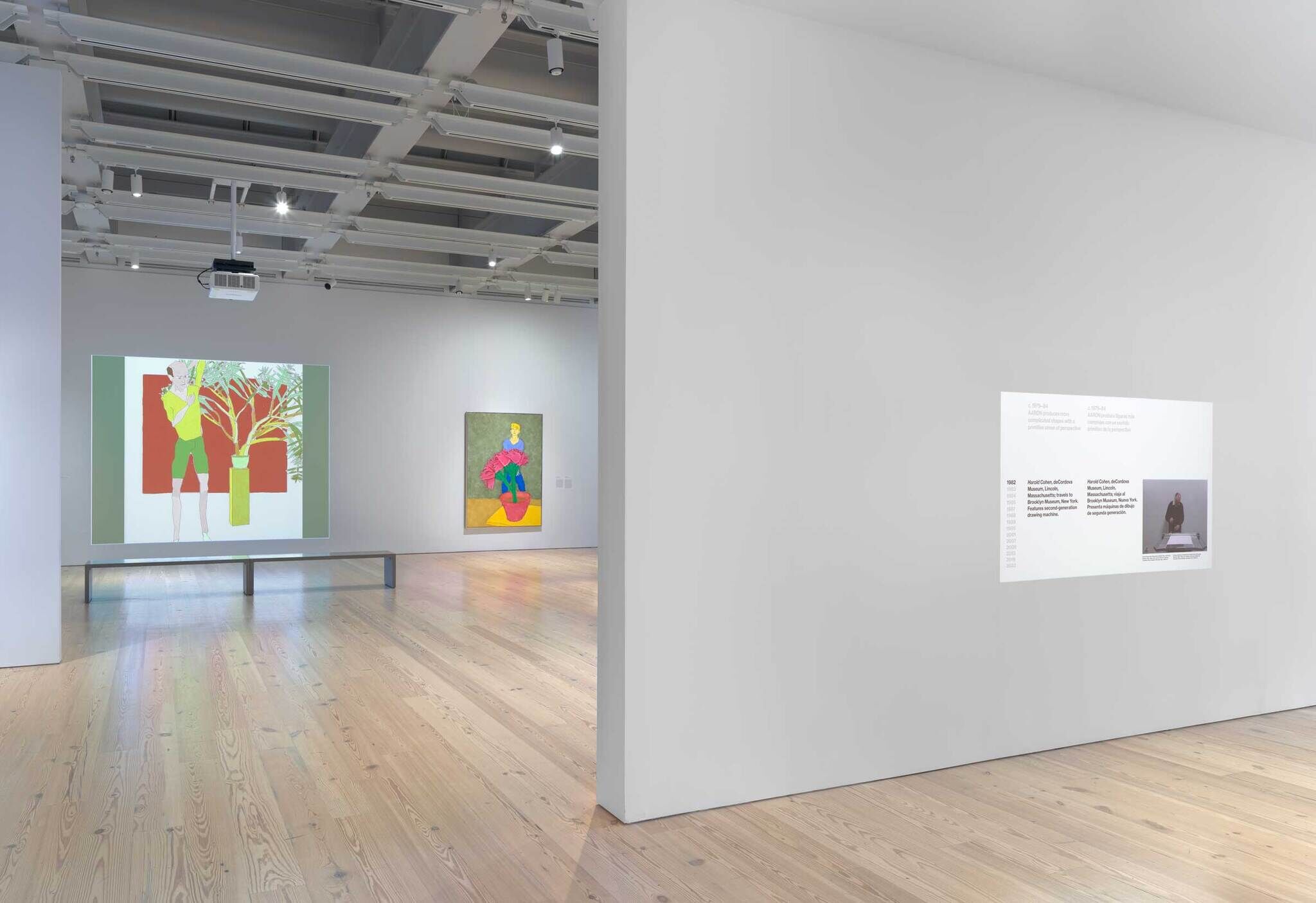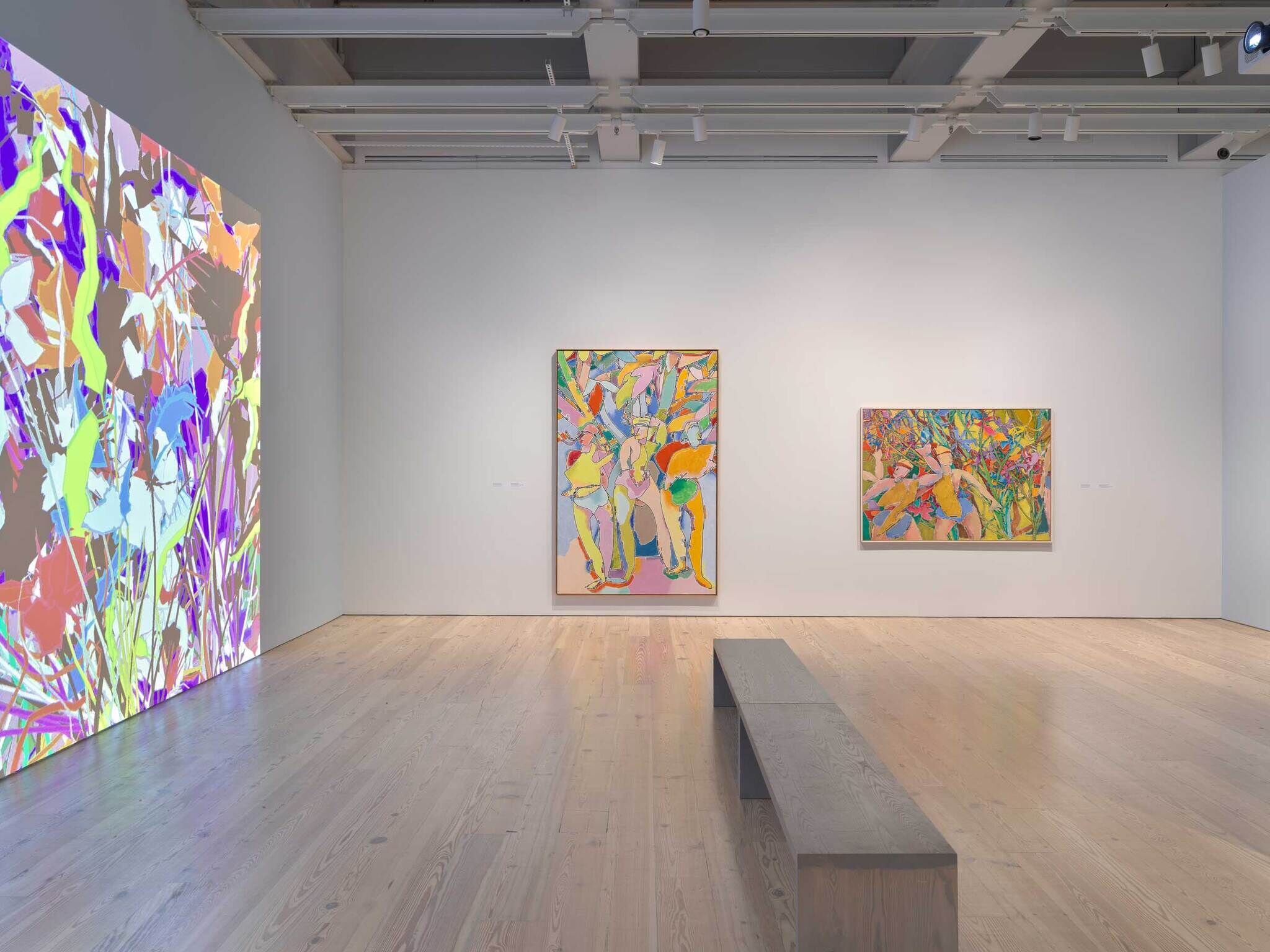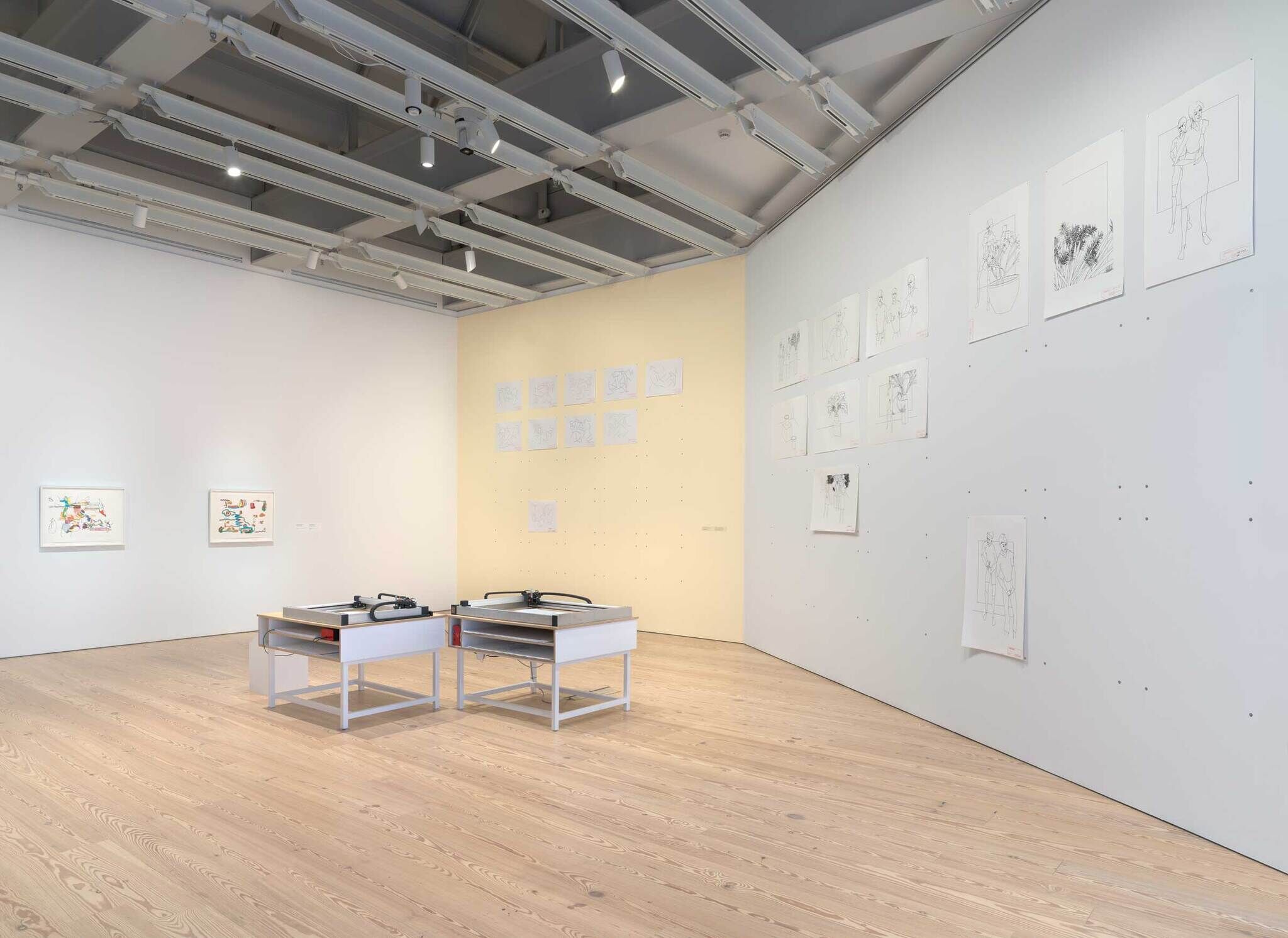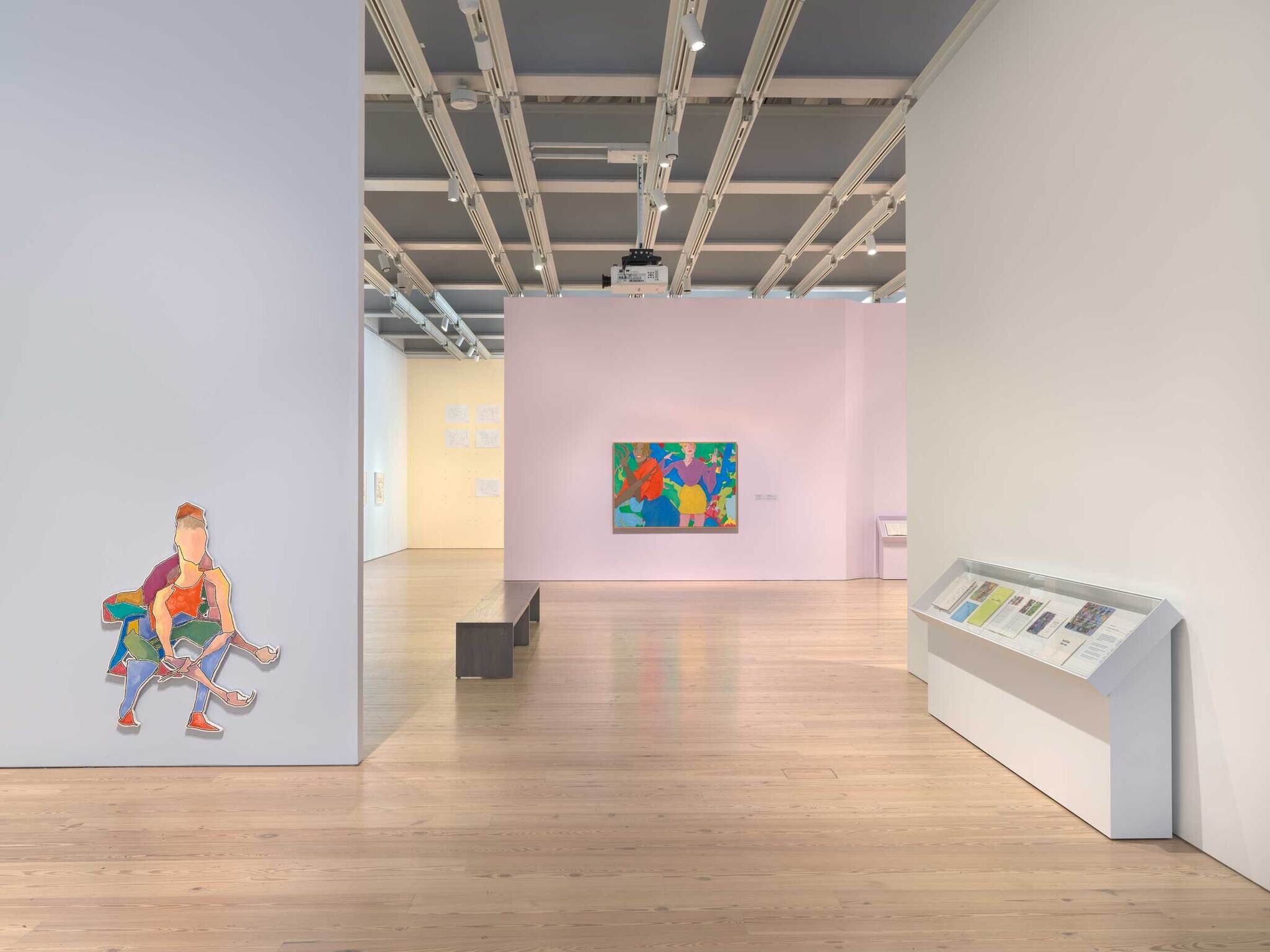Harold Cohen: AARON
Feb 3–May 19, 2024
This exhibition traces the evolution of Harold Cohen’s AARON, the earliest artificial intelligence (AI) program for artmaking. Leaving behind his practice as an established painter in London, Cohen (1928–2016) conceived the software in the late 1960s at the University of California, San Diego, and named it AARON in the early 1970s. The title alludes to the biblical figure anointed as speaker for his brother Moses, and questions how artistic creation is often glorified as a form of communication with the divine. Cohen understood his work with AARON to be a collaboration, and he devoted his life to exploring the potential of artificial intelligence to translate an artist’s knowledge and process into code.
Over the decades the AARON software has created images meant to be executed by drawing and painting devices, as well as visuals for display on monitors or as projections. To generate AARON’s output, Cohen built his own plotters and painting machines, which interpret commands from a computer to make line drawings on paper with automated pens and add color with brushes. Drawn from the Whitney’s collection, this exhibition not only features AARON works, but also highlights the software as the central creative force behind them through screen-based versions of the program and drawings made by plotters operating live in the gallery.
As artificial intelligence tools for image creation have entered the mainstream with text prompt–driven software such as DALL-E, Midjourney, and Stable Diffusion, Harold Cohen: AARON provides important historical perspective. It also offers deeper explorations of ideas about creativity, authorship, and collaboration in the context of AI.
This exhibition is organized by Christiane Paul, Curator of Digital Art, with David Lisbon, Curatorial Assistant.
Generous support for Harold Cohen: AARON is provided by Judy Hart Angelo.
Significant support is provided by Joan and Irwin Jacobs.
Additional support is provided by the Bell Family Foundation and David L. Diamond.
En español
Esta exposición traza la evolución de AARON de Harold Cohen, el primer programa de inteligencia artificial (IA) para la creación de arte. Dejando atrás su práctica como pintor consagrado en Londres, Cohen (1928–2016), concibió el software a finales de la década de 1960 en la Universidad de California, San Diego, y lo nombró AARON al inicio de los setenta. El título alude a la figura bíblica proclamada como portavoz y mediadora de su hermano Moisés, y cuestiona cómo a menudo se glorifica la creación artística como forma de comunicación con lo divino. Cohen concibió su obra con AARON como una colaboración y dedicó su vida a explorar el potencial de la inteligencia artificial para traducir el conocimiento de un artista y codificarlo.
A lo largo de décadas, el software AARON ha creado imágenes destinadas a ser ejecutadas por dispositivos de dibujo y de pintura, al igual que visuales para mostrar en monitores o a manera de proyecciones. Para generar producciones de AARON, Cohen construyó delineadores y máquinas pictóricas, que interpretan comandos de una computadora para hacer dibujos lineales sobre papel con bolígrafos automáticos y añade colores con pinceles. Tomados de la colección del Whitney, esta exhibición no sólo muestra obras de AARON, sino que también resalta el software como fuerza creativa central detrás de las mismas, a través de versiones del programa basadas en pantallas y dibujos hechos por plóteres que operan en vivo en la galería.
Dado que las herramientas de inteligencia artificial para la creación de imágenes se han vuelto populares con softwares basados en mensajes de texto como DALL-E, Midjourney y Stable Difusion, Harold Cohen: AARON provee una perspectiva histórica importante. También ofrece una exploración más profunda sobre ideas de creatividad, autoría y colaboración en el contexto de la inteligencia artificial.
Flora and Figures
3
Before AARON executed fully dimensional figures, from about 1989 onward, the program created compositions of rocks and flora with abstract humanlike figures. These works reveal the connections between these early figurative drawings set in nature from the late 1980s and software from the 2000s that explored junglelike environments of layered foliage. AARON’s shift from abstraction to figuration in the mid- to late 1980s marked both a technical and conceptual change. To make recognizable figures in an environment, the software had to have a different, more concrete, knowledge of the world. The painting Untitled, Bathers Series (1986) alludes to French Post- Impressionist painter Paul Cézanne’s early twentieth-century works The Bathers and The Large Bathers. Adopting Cézanne’s strategies, Cohen’s code strives to have AARON create essential structures for representation and chromatically harmonizes the trees and human skin. The overlapping foliage of the earlier works would evolve into the complex composition of plant life shown in the projected software from 2007. AARON has no stored descriptions of particular flora but generates plants from rules about their size, branching levels, and patterns of leaf formation.
Mobile guides
Learn more about selected works from artists and curators.
View guide
